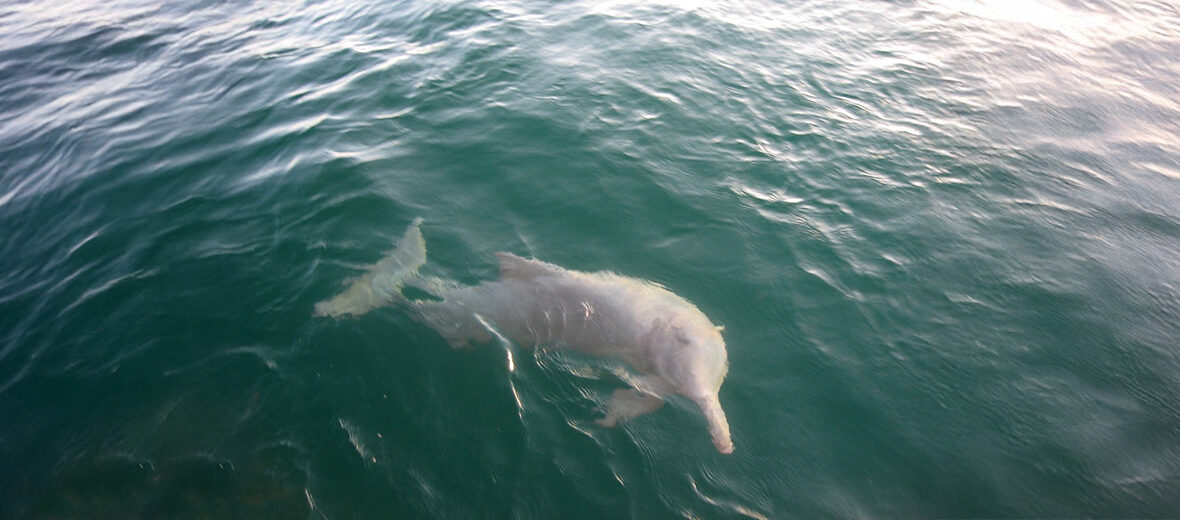
The Indo-Pacific humpback dolphin, aka Chinese white dolphin, can be found in the coastal waters of the eastern Indian and western Pacific Oceans. These dolphins face the threats of habitat loss and destruction at the hands of residential and commercial developments; getting caught in shipping lanes, which can result in vehicle strike (being hit by shipping vessels); overfishing; over harvesting; land pollution; and water pollution, including microplastics pollution. The IUCN lists these dolphins as Vulnerable. Their populations are also decreasing.
First the Stats…
Scientific name: Sousa chinensis
Weight: Up to 510 lbs.
Length: Up to 11.6 feet
Lifespan: Up to 40 years
Now on to the Facts!
1.) Some biologists consider the Indo-Pacific dolphin to be a subspecies of the Indian Ocean humpback dolphin. That being said, DNA testing studies have proven that the 2 are indeed distinct species.
2.) There are 2 subspecies of these dolphins currently recognized: S. c. chinensis, aka Chinese humpback dolphin and S. c. taiwanensis, aka Taiwanese humpback dolphin.
3.) These dolphins dwell in small pods of up to 10 individuals.
4.) Like most other dolphins, they utilize echolocation to locate prey and to assist in making their way among the often times murky shoreline water.
5.) They will spend up to 30 seconds breaching the water’s surface only to dive again for upwards of 8 minutes at a time.
But wait, there’s more on the Indo-Pacific humpback dolphin!
6.) These dolphins often engage in breaching (breaking the surface of the water), porpoising (leaping completely from the water), spyhopping (raising the front half of their body from the water to get a look around), and bow-riding (riding the wakes created by moving aquatic vessels).
7.) Females reach reproductive age at approximately 10 years old, while males reach sexual maturity at about the age of 13.
Did you know…?
In recent years, Taiwan kicked off the largest Indo-Pacific humpback dolphin sanctuary on the Taiwanese coast, reaching from Miaoli County to Chiayi County.
8.) The female will typically undergo up to an 11 month gestation (pregnancy) that yields a single calf.
9.) The calf measures up to 3.3 feet at birth and stays with their mother for up to 4 years, when they can finally hunt for themselves.
10.) They are listed on Appendix II of the convention on the Conservation of Migratory Species of Wild Animals (CMS). This is due to the fact that they have an unfavorable conservation status and would benefit significantly from international cooperation organized by tailored agreements.
Now a Short Indo-Pacific Humpback Dolphin Video!
Be sure to share & comment below! Also, check out the Critter Science YouTube channel. Videos added regularly!

Want to suggest a critter for me to write about? Let me know here.
Some source material acquired from: Wikipedia & IUCN
Photo credit: iNaturalist



